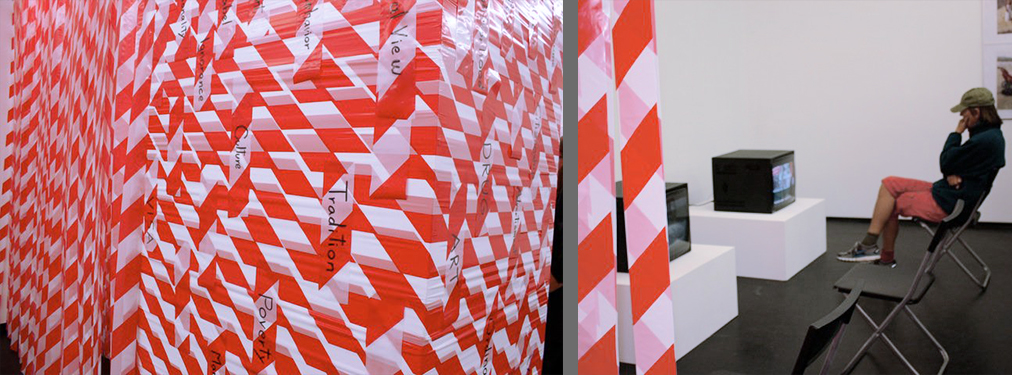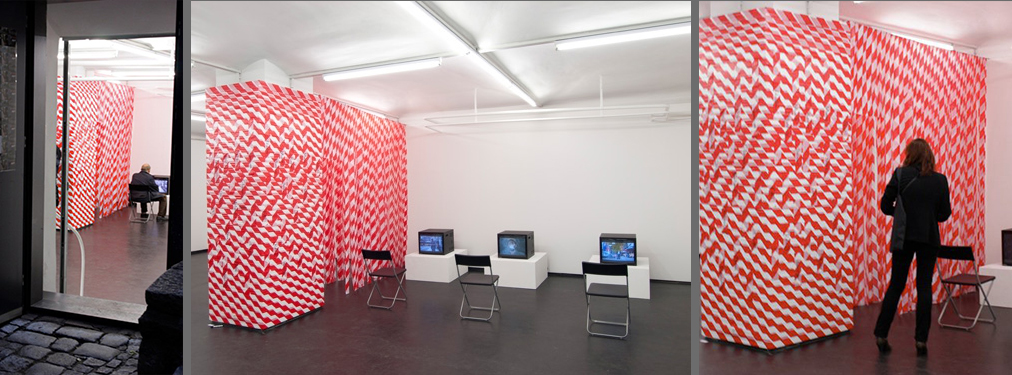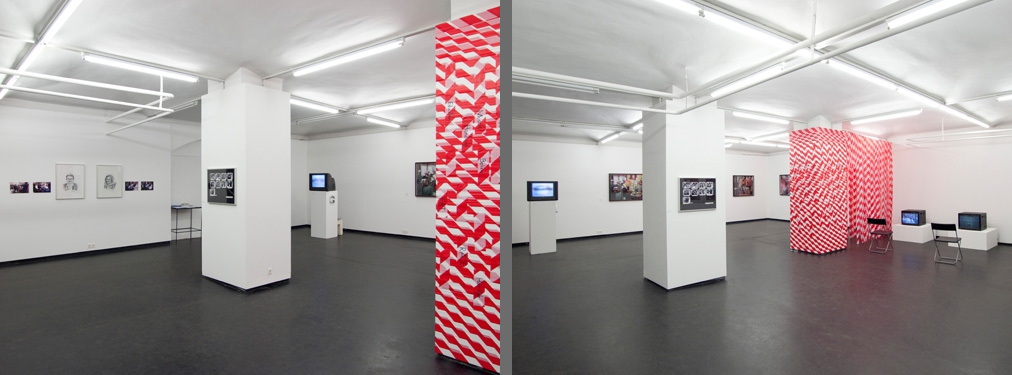


Caution Vienna 2010
Installation : Wire, Wood and 1000 Meters Caution Tape
Exhibition Forming Identity II, Curated by Claudia Marion Stemberger
Fotogalerie Wien, Vienna, Austria
Shahram Entekhabi’s attention is often drawn to questions of cultural and gender-specific identities. His migrant doppelganger characters expose prototypical masculine identities as well as their associated clichés. In his three performative video works, Mehmet, Mladen, and Miguel (2005) especially the influences of media stereotyping on the attributes of cultural and masculine identity are considered. The focus is thereby not only on the artist’s own migrant background, but includes numerous “foreign” cultural identities, that the artist humorously exaggerates.
Entekhabi emphasizes the potential of aggression, of and against migrants and at the same time, his work points out the (negative) media instrumentalization of the lifeworld of the “other”.
Exhibition "Forming Identity II
“What constitutes identity today?” is one of the questions posed by the curatorial team at Fotogalerie Wien in the context of the annual Theme of Focus for 2010. The three-part exhibition series focuses on the issues of identity at present, in its multi-faceted and processual form. It includes presenting artistic positions who mirror the inconclusive and, more particularly, the ambiguous aspects of identity of today’s late modernist subject: The artists visualize how the interwoven formation of personal and collective identities paradoxically oscillate between internal and external determinations of the self.
The topic of the second exhibition, Identity II – Forming Identity, questions ambivalent models of interpreting the formation of identity, which, depending on the context, diverge between identification and ideologization: According to Jan Assmann, collective identity is only “as strong or as weak as it is alive in the thoughts and actions of the group members […]”. It is the expression of that which connects people to each other through homogeneous self- and cultural identifiers and is how individuals identify themselves.
The forming of identity however, becomes suspect of being ideology as soon as it begins to delineate the adoption of cultural homogeneity or historical continuity. The manipulative use of identity to form a symbolic entity shows how it can be instrumentalized for the construction of larger groups. Such universalizing tendencies reveal themselves as a normative suggestion, thereby manifesting the affiliation of identity with autonomy even more significantly.
Claudia Marion Stemberger